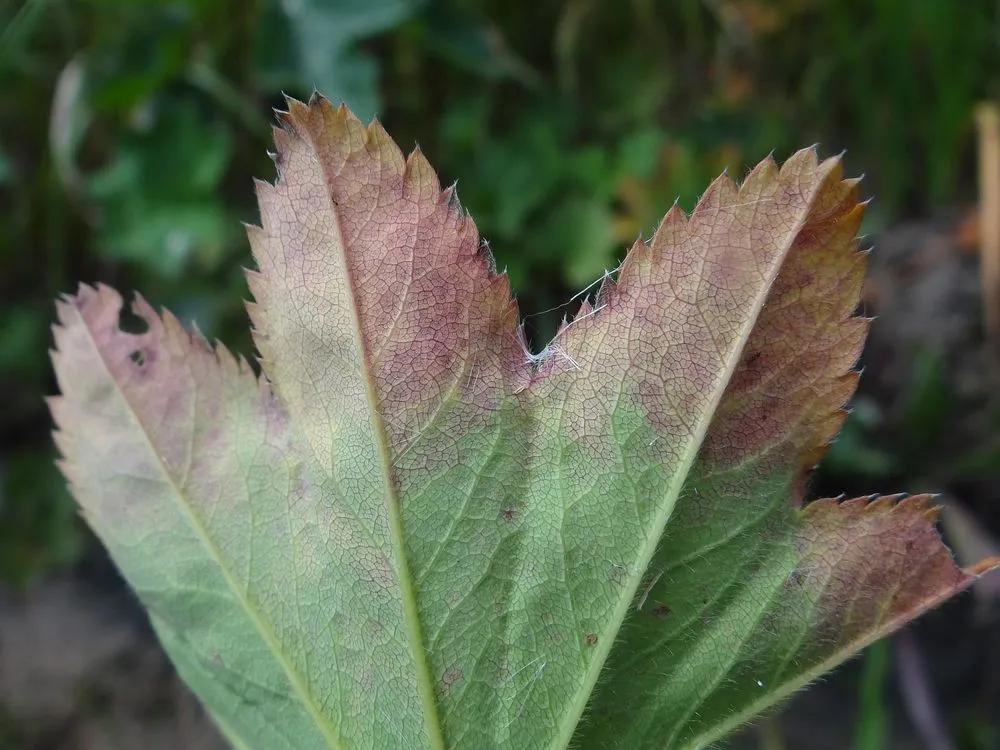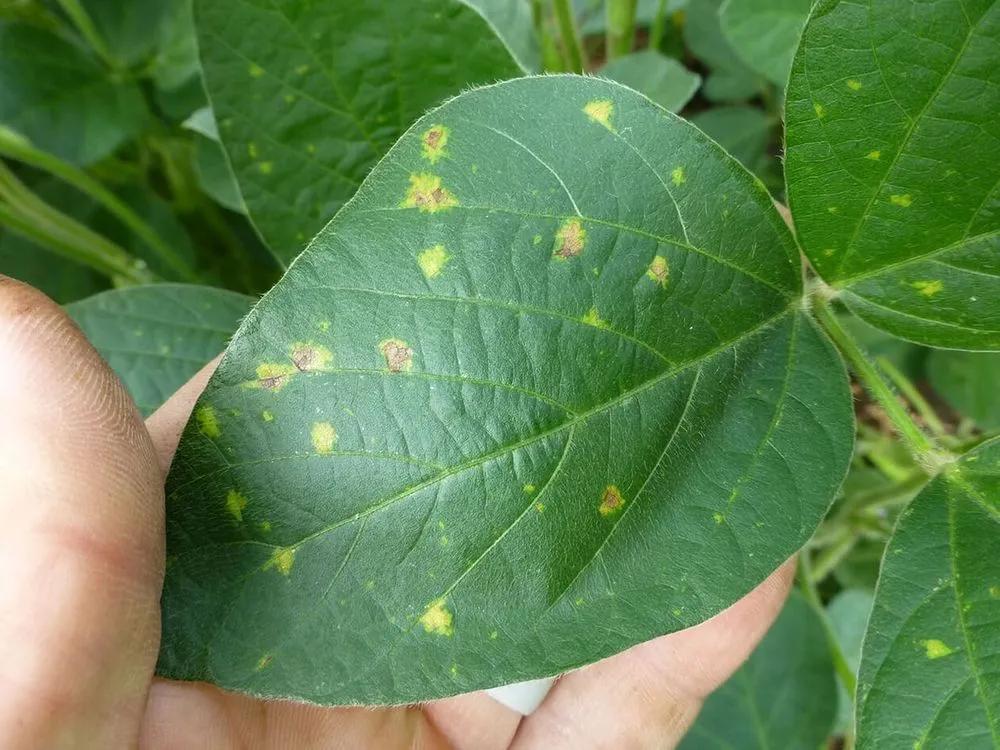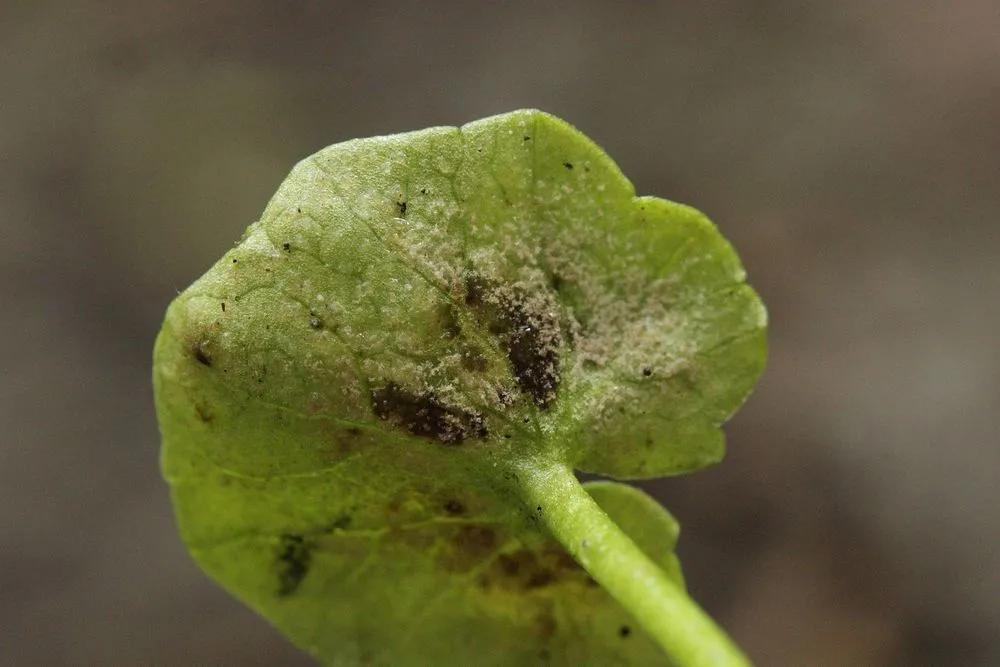Peronospora is a genus of oomycetes from the Peronosporaceae family with 260 species. They are widely known as downy mildew since most species produce this kind of disease. These plant pathogens are notorious for causing great damage to several crops, ornamental plants, and wild plants. Most species are highly specific to their hosts. Examples of this are the specie that causes blue mold on tobacco plants, another for sweet onion, and even one specific to opium poppy. Their potentially devastating nature is so significant they have even been classified as a bioweapon. These fungi-like molds prefer humid air and cool temperatures and spread by wing, which allows for effortless dispersion over large areas.
Peronosporea



Signs of damage
- Leaf damage. Leaves will begin to curl and get distorted. They’ll begin yellowing and stippling, and it can even lead to necrotic spots across their surfaces.
- Spores. White spores from the pathogen will appear on the down-facing surface of the leaves.
- Defoliation.
- Stunted growth. The damage will result in the inability for proper development, and plants will begin to grow slower or even cease to grow.
How to prevent
Plants’ health begins with a clean space, without old crops or any dead or infected material, and proper airflow. Selective pruning should also be practiced.
Unnecessary or excessive moisture should be kept under control. This could be done by optimal watering practices, such as water from below, close to the ground, to allow leaves to remain dry and a less susceptible environment for molds. Mulching is also an important practice to retain and control moisture in the soil.
Heal
Fungicides like chlorothalonil and mancozeb are known to be the most effective fungicides for downy mildew, although they’re usually considered to be more protectant than healing. Neem oil is known for being a good way to keep downy mildew and other similar diseases other control. Heat treatments to raise the cold temperatures will also kill the pathogens and allow plants to develop properly.
Go Premium to continue reading
Also you’ll get unlimited access to disease identification and all the other beneficial features
More problems
